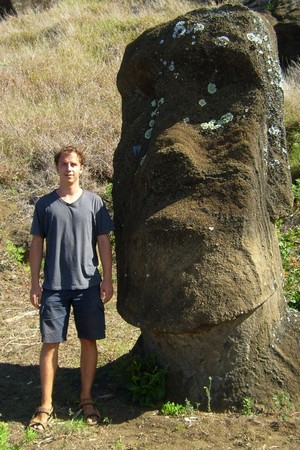Georg M Goerg: Difference between revisions
From Santa Fe Institute Events Wiki
No edit summary |
No edit summary |
||
| Line 33: | Line 33: | ||
In my spare time I like to play soccer, volleyball, salsa dancing, traveling, ... | In my spare time I like to play soccer, volleyball, salsa dancing, traveling, ... | ||
== SFI Project == | |||
Revision as of 20:13, 5 June 2012

My path to SFI
I am a PhD candidate (starting 4th year) in Statistics at Carnegie Mellon. I received my masters in mathematics (applied / econometrics / time series) from the Vienna University of Technology, Austria and before coming to the US, I spent a year in Chile teaching statistics (mainly time series) at PUC. For more details you can visit my website. You can email me at "my_3_initials_in_lowercase"@stat.cmu.edu.
I am very eager to participate in the CSSS; especially because of the inter-disciplinary research / collaborations on real world problems with people from many backgrounds - that's what statistics is all about (at least for me). So I am looking forward to meeting all of you and I am sure we'll have a great month ahead of us.
Research Interests
In my thesis I work on local statistical complexity (LSC) - a measure of interestingness for spatio-temporal fields. We develop the statistical methods and algorithms to i) forecast a spatio-temporal system, and ii) discover patterns automatically solely from the data. We do this using modern non-parametric statistical / machine learning techniques with good properties for any kind of (complex) spatio-temporal system.
One reason why I work on spatio-temporal systems is that I have always been drawn to time series (a la "My interest lies in the future because I am going to spend the rest of my life there. ” - Charles F. Kettering) and methods that try to solve real-world problems. These include time series clustering, forecasting, blind source separation techniques for forecastable time series, time-varying parameter models. Another side-project are skewed and heavy-tailed distributions, in particular how we can transform random variables to introduce skewness and heavy tails. And as a statistician what's even more relevant to me is how can I reverse this transformation so I can take data and remove skewness, remove power laws, remove heavy tails.
I do all my statistical computing in R -- for user-friendly code and R packages (two so far), and Python -- for huge data tasks.
In my spare time I like to play soccer, volleyball, salsa dancing, traveling, ...
